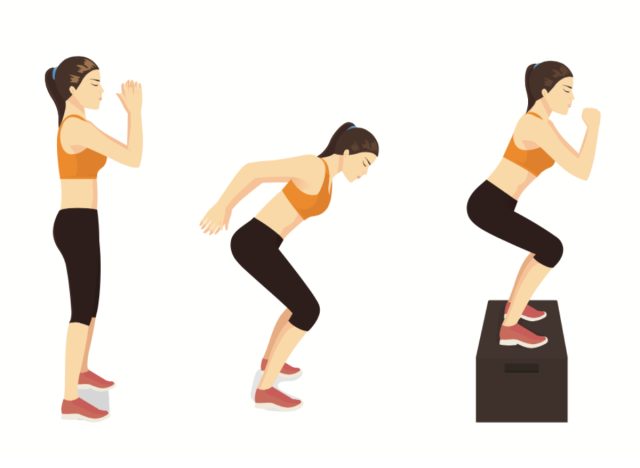Knee pain can be a workout killer. Whether it’s from an old injury, arthritis, or wear and tear, bad knees can make certain exercises feel like a battle. But the good news is, you don’t have to give up on your fitness goals. There are many ways to stay active and build strength without putting undue stress on your knees. In fact, by making a few smart adjustments, you can keep working out and protect those precious joints. I’ve rounded up 10 of the worst exercises for bad knees and what to do instead.
As a certified strength and conditioning specialist (CSCS) with years of experience helping clients and athletes manage and overcome knee pain, I’ve seen firsthand the impact the right exercise modifications can have. The key is knowing which exercises to avoid and what alternatives to choose instead. You want to avoid movements that strain your knees excessively, but still get a good workout that builds strength and improves your overall fitness.
Below, we’ll explore the top 10 worst exercises for bad knees and 10 better alternatives. We’ll cover everything from common gym staples like back squats and treadmill sprints to popular moves like lunges and plyometrics. By the end, you’ll have a game plan for staying active and strong without aggravating your knees.
Disclaimer: I love all the exercises listed here for developing strength, muscle size, and endurance and aiding in weight loss. However, it’s crucial to identify exercises that might not be ideal for those suffering from knee pain or lacking proper technique and mobility at the moment. Once you’re healthy, these challenging exercises can become some of your favorite and most effective movements in the gym!
1. Back Squats
Back squats can be challenging for those who lack experience and mobility or suffer from knee pain. Proper squat form demands significant ankle, hip, and upper-back mobility. Often, the problem isn’t the back squat itself but rather the insufficient mobility or lower-body strength that leads to difficulties.
What to do instead: Box Squats
Box squats are an excellent option for training the lower body while addressing knee pain, improving mobility, or building confidence in your technique.
Position the box at a depth you can achieve comfortably. Focus on bracing your core, ensuring proper knee alignment (no caving in!), and maintaining strength and stability throughout the movement. Knock out three sets of eight to 12 reps. Rest for 90 seconds between sets.
2. Plyometrics (Jumps)

Plyometric exercises like box jumps or jump squats are high-impact and can put a lot of stress on the knee joints. The explosive nature of these movements can aggravate knee pain, especially if landing mechanics are not perfect.
What to do instead: Med Ball Throws and Slams
Med ball throws and slams provide a great way to incorporate explosive power into your workout without impacting your knees. These exercises engage your whole body and can be just as effective at building power and coordination.
The name of the game here is being explosive. Complete five sets of three to five reps for the med ball throw or slam of your choice. Rest for 90 seconds between sets.
3. Treadmill Sprints or Runs

Running, especially at high speeds, can be tough on the knees due to the repetitive impact. Treadmill sprints exacerbate this by often encouraging a more jarring landing than running on softer surfaces like grass or dirt.
What to do instead: Air Bike Sprints

Air bike sprints are a fantastic, low-impact alternative. The bike allows you to get your heart rate up and work on your cardiovascular fitness without the pounding on your knees. Plus, you can easily control the intensity to match your fitness level.
For a steady-state session, complete 20 to 30 minutes of low-moderate intensity movement. For sprints, complete 10 to 15 rounds of 15 seconds of sprint, paired with 45 seconds of rest.
4. Forward Lunges

Lunges can be tricky for those with knee pain because they place a lot of load directly on the knee joint, especially if your form is off. The forward motion and the deep bend can cause discomfort or worsen existing issues.
What to do instead: Split Squat Isometric Holds
Split squat isometric holds take the pressure off your knees while still targeting your lower-body muscles. By holding the position without moving up and down, you can strengthen your legs and joints and improve stability without aggravating your knees.
Perform three sets of 30-second isometric holds, focusing on engaging your lower body muscles and core. Rest for 90 seconds between sets.
5. Front Squats

Front squats require a lot of knee flexion and place considerable stress on the knees. This can be problematic for those with knee issues, particularly if they lack the necessary mobility and strength.
What to do instead: Sled Pushes

Sled pushes are an excellent alternative. They provide a great workout for your quads, glutes, and hamstrings without the same level of knee strain. Plus, they’re adjustable in terms of weight and intensity, making them suitable for various fitness levels.
Push the sled for three to four sets of 15 to 20 yards. Rest for 60 seconds between sets.
6. Stairmaster
The Stairmaster involves continuous, repetitive motion that can be tough on the knees, especially if you have existing pain or conditions like arthritis. The constant step-up motion can exacerbate knee issues over time.
What to do instead: Reverse Sled Pulls
Reverse sled pulls offer a knee-friendly way to build lower-body strength and endurance. This exercise emphasizes the posterior chain (glutes and hamstrings) and can improve knee health by strengthening the muscles that support the joint.
Pull a light sled for 60 seconds, followed by a 60-second rest period. Repeat this for 10 to 15 rounds.
7. Leg Press Machine

The leg press machine can place a lot of stress on your knees, particularly if you go too deep or use excessive weight. The fixed path of the machine also doesn’t allow for natural knee movement.
What to Do Instead: Seated Leg Extensions

Seated leg extensions are a better alternative for isolating the quadriceps without putting as much stress on the knee joint. Make sure to use a manageable weight and focus on controlled movements to avoid strain. Complete three sets of 12 to 15 reps. Rest for 60 seconds between each set.
8. High-impact Aerobics

High-impact aerobics, with lots of jumping and rapid direction changes, can be harsh on the knees. The repeated impact and lateral movements can aggravate knee pain and lead to injury.
What to do instead: Low-impact Cardio

Low-impact cardio options like swimming, cycling, or using an elliptical machine provide a great cardiovascular workout without added stress on your knees. These exercises allow you to stay active and maintain your fitness levels safely.
Replace your high-intensity exercises with knee-friendly, low-impact options. Aim to perform these movements for the same duration as your high-impact workouts, ideally 30 to 60 minutes per session.
9. Lateral Lunge

Lateral lunges require a significant range of motion and stability, putting a considerable load on the knee joint, especially the inner knee. This movement can be particularly harsh if you already have knee pain or instability. The lateral motion and deep knee bend can stress the medial and lateral ligaments, potentially worsening existing conditions.
What to do instead: Lateral Sled Drags
The lateral sled drag is an excellent alternative that still targets the muscles involved in lateral lunges but with less impact on the knees. This movement engages your glutes, hips, and core while minimizing knee strain.
To perform this exercise, attach a sled with a moderate weight and stand to one side of it. Grab the handles or ropes, brace your core, and take controlled side steps, dragging the sled. By maintaining a steady motion, you can build strength and stability in your lower body without putting excessive pressure on your knees. Complete three sets of eight to 12 steps per side. Rest for 90 seconds between sets.
10. Burpees

Burpees are a high-intensity, full-body exercise that involves a lot of jumping and rapid movement changes, which can be very taxing on the knees. The repetitive impact from jumping and the quick transitions from standing to a plank position can aggravate knee pain and potentially lead to injury. For individuals with knee issues, burpees can place unnecessary strain on the joints and exacerbate discomfort.
What to do instead: Thrusters from a Box
Thrusters from a box are a knee-friendly alternative that still provides a great cardiovascular workout and engages multiple muscle groups.
To perform this exercise, sit on a box or bench with your feet flat on the ground. Hold a pair of dumbbells at shoulder height. Stand up by driving through your heels, and press the dumbbells overhead as you reach the top. Return to the sitting position on the box and repeat.
This variation reduces the impact on the knees by eliminating the jumping component and providing a stable base. Focus on maintaining good form, engaging your core, and using controlled movements to ensure an effective and safe workout. Perform three to four sets of 10 to 15 reps. Rest for 60 seconds between sets.







